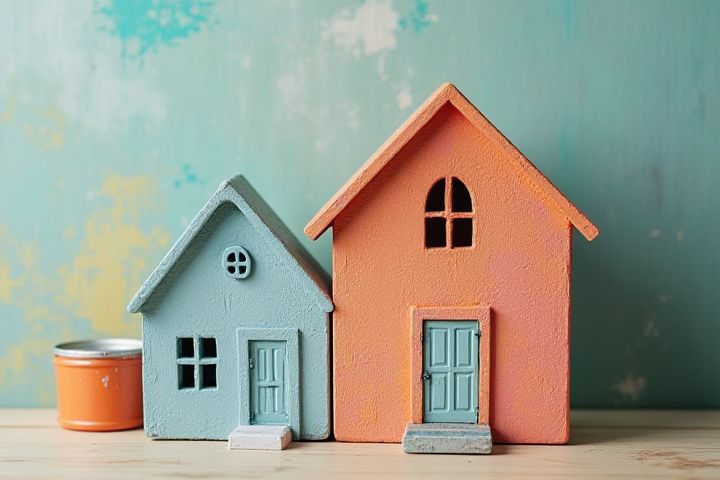
Painting your house can significantly enhance its curb appeal and protect the exterior surfaces from weather-related damage. Choosing high-quality paint can provide long-lasting color vibrancy and durability, making it a worthwhile investment for your home. Different genres of paint, such as acrylic or oil-based, may better suit various materials, such as wood or vinyl siding. Additionally, selecting a color that complements your neighborhood aesthetic can increase your property's value. Considering seasonal conditions for optimal drying times will ensure a smoother application and longevity of your paint job.
Should You Paint Your House
Surface preparation is crucial
Surface preparation is crucial for achieving a long-lasting and visually appealing paint job. This process includes thoroughly cleaning the exterior, repairing any damage, and sanding rough areas to ensure better adhesion of the paint. Research shows that homes with properly prepped surfaces can extend the lifespan of paint by up to 50%. Neglecting these steps may lead to peeling, cracking, and premature wear, costing you more in the long run.
Choose the right paint type
Choosing the right paint type is essential for achieving a long-lasting finish on your house. For exterior walls, opt for 100% acrylic latex paint, which offers excellent durability and weather resistance, making it a superior choice for varying climates. If you're painting interiors, consider using low-VOC or zero-VOC options to enhance indoor air quality, with satin or eggshell finishes ideal for kitchens and bathrooms due to their moisture resistance. Don't forget to factor in the square footage of your home, as one gallon of paint typically covers about 350 to 400 square feet, ensuring you purchase enough for complete coverage.
Optimal weather conditions for painting
Optimal weather conditions for painting your house include mild temperatures, low humidity, and dry skies. Ideally, aim for a temperature range between 50degF and 85degF, as extremes can affect paint adhesion and drying times. Low humidity levels, ideally under 70%, prevent moisture from interfering with paint application, ensuring a smooth finish. To ensure the best results, check weather forecasts and schedule your painting project for clear days without impending rain or heavy winds.
Color selection affects aesthetics and resale value
Color selection significantly impacts your home's aesthetics and resale value, making it a crucial decision for homeowners. Warm hues like soft beige or light gray can create a welcoming atmosphere, while bold colors such as deep blue or vibrant red may accentuate character and contemporary style. A well-chosen palette can enhance curb appeal, attracting potential buyers and potentially increasing offers. When selecting colors, consider your neighborhood's architectural style and the preferences of your target market to maximize your investment.
Quality tools enhance finish
Using high-quality paintbrushes and rollers significantly improves the final appearance of your home's paint job, ensuring a smooth and even finish. Invest in paint that has a higher pigment concentration; this not only results in better color saturation but also enhances durability, lasting up to 10 years. Selecting the right primer can enhance adhesion and provide a uniform base, increasing the paint's coverage by up to 30%. Your preparation, combined with superior tools, can turn an ordinary DIY project into a professional-looking masterpiece.
Primer is often necessary
Primer is essential for achieving a smooth and durable finish when painting your house, as it helps to seal porous surfaces and improve paint adhesion. Using a quality primer can enhance color vibrancy and reduce the number of paint coats needed, saving you both time and money. If your home has stains, uneven surfaces, or drastic color changes, applying primer is particularly important to ensure the best results. For optimal performance, select a primer that is compatible with your chosen paint type and the surface you're treating.
Safety precautions for high areas
When painting high areas of your house, prioritizing safety is crucial. Use a sturdy ladder that meets safety standards, and ensure it's placed on stable ground to prevent slips or falls. Wearing a safety harness can provide extra security, especially when working on steep roofs or elevated surfaces. Always have a spotter nearby to assist and alert you to any potential hazards while you concentrate on your painting task.
Cost estimation and budget
The average cost to paint a house ranges from $1,500 to $4,000, depending on the size and condition of your home. For a typical 2,500 square-foot home, exterior painting can run around $3,000, while interior painting generally costs between $1.50 to $3.50 per square foot. You should also allocate 10-15% of your budget for unexpected expenses, ensuring you have a safety net for repairs or extra materials. By carefully estimating costs and comparing quotes from local painters, you can create a budget that aligns with your financial goals and desired outcomes.
Professional vs DIY considerations
Painting your house can significantly enhance curb appeal and protect surfaces, but the decision between hiring professionals or going the DIY route involves key considerations. Professional painters bring expertise, tools, and efficient techniques, often resulting in a high-quality finish and time savings. On the other hand, DIY painting allows you to save money and gain creative control over color selection and application methods, though it may require considerable effort and experience. Assess your budget, timeline, and skill level to determine the best approach for your specific project needs.
Longevity and maintenance factors
Painting your house significantly enhances its longevity by providing a protective barrier against environmental elements such as moisture, UV rays, and pests. Using high-quality, weather-resistant paint not only prevents peeling and fading but also extends the lifespan of your siding or exterior materials. Regular maintenance, including periodic inspections and touch-ups, ensures that your home remains both aesthetically pleasing and structurally sound. By prioritizing these factors, you can safeguard your investment while reducing long-term repair costs.
